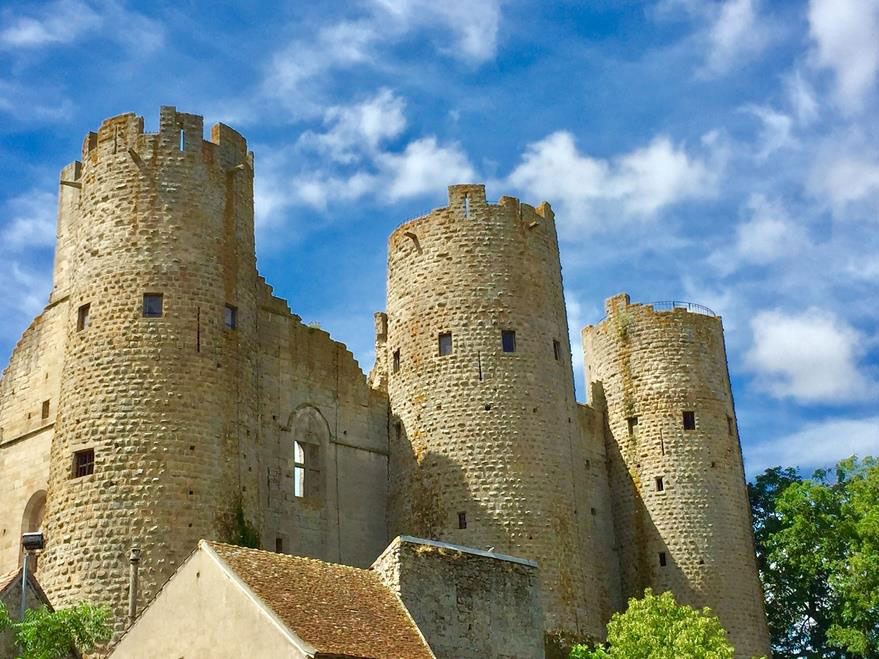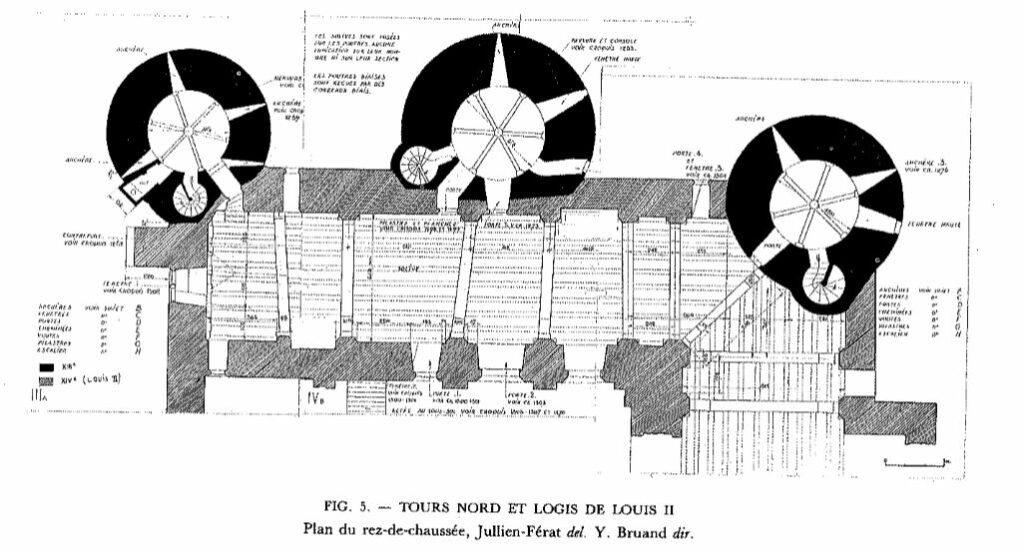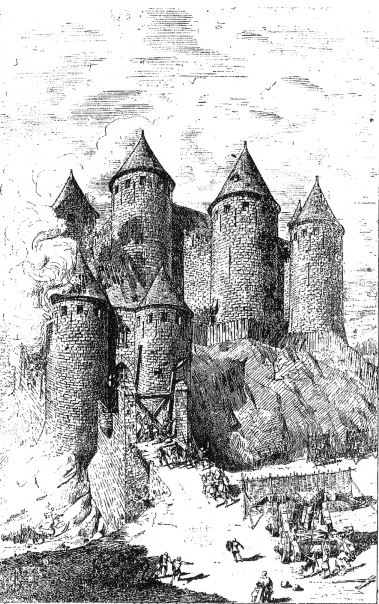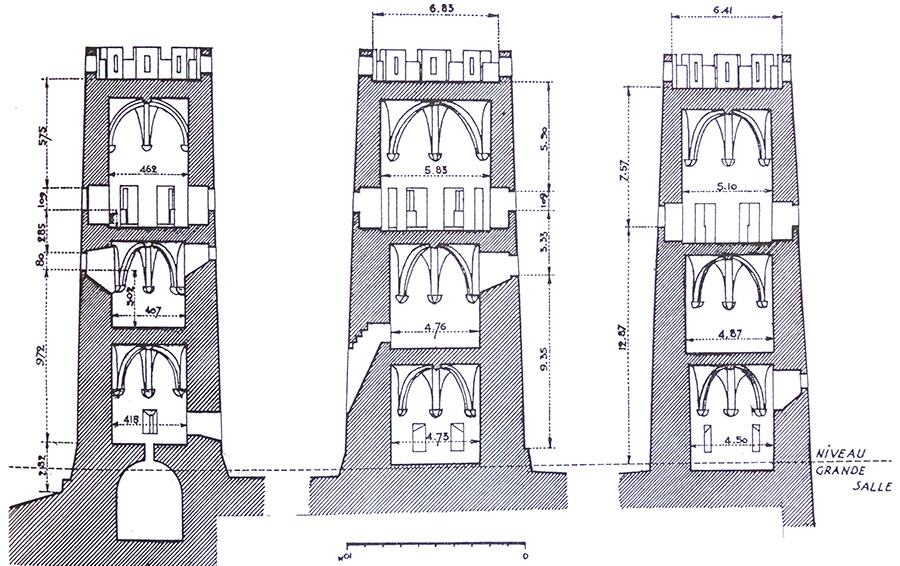
The three towers of the Northern front
The three towers date from the
late XIVth c. in their present appearance, but were a third shorter
previously. Another storey was added by Louis II’s maîtres d’oeuvre.
Look at the difference in colour of the stones making up the facing of the two lower levels and that of the upper level.
Previously, the towers were crowned with pepperboxes (conical roofs), one of which suppling rain water to the cistern of the Western tower. But these pepperboxes didn’t look exactly like the ones in the picture.
Leaving bosses on the stones was a technique that came and went with time. This type of facing is very common in the kings’ fortresses or those of royal family members in the XIIIth c. but it was introduced much earlier in Bourbon, in the XIIth c. by Archambaud VIIth.
Historians now think there is little military advantage to leaving bosses on the stones. It is a style destined to make the fortress look stronger and dissuasive.
© March 2023


